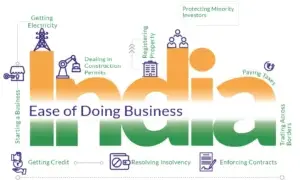In an era of fast-paced technological advancements, many traditional government structures are struggling to keep pace with the needs of modern citizens. The ministerial system, designed to centralize authority and streamline decision-making, once provided an essential function in governance. However, as digital platforms and decentralized systems emerge, the need for centralized ministries is increasingly called into question. In a digital, decentralized world, local representatives and constituency-focused governance can respond more efficiently to local needs, ensure accountability, and involve citizens directly in the policy process. Here’s why ministries are becoming increasingly obsolete in today’s landscape, and how decentralized, digital-first models offer a more responsive approach.
- The Disconnect Between Ministries and Localized Issues
One of the primary challenges with ministerial governance is that it centralizes decision-making far from the people most affected by those decisions. Ministers, often working in regional or national capitals, must oversee broad sectors (such as education, health, or transportation) across diverse areas, each with unique needs. This centralized approach can lead to policy decisions that are disconnected from the specific contexts of various localities.
In a decentralized system, however, governance shifts closer to the people. For example, rather than a national Ministry of Education dictating policy across all schools, local authorities can directly manage education based on the particular needs of their communities. Digital tools enable this approach by facilitating data-driven decision-making, allowing local administrators to monitor school performance, adapt curricula, and address teacher shortages or infrastructure needs specific to their communities. This creates a system in which decisions are more aligned with local needs, fostering solutions that are more practical and effective for the population they serve.
- Enhanced Transparency and Accountability Through Digital Platforms
Ministries are often insulated from the direct feedback of the public, resulting in slower responses to issues and reduced accountability. With a digital, decentralized approach, however, real-time transparency and accountability become central. Digital governance platforms provide citizens direct access to data on budgeting, resource allocation, and project progress in their areas. This information empowers communities to hold their representatives accountable, encouraging a responsive and open governance system.
For instance, consider a local government that has digital systems tracking the progress of a public infrastructure project. Instead of waiting for ministry updates, citizens can directly monitor timelines, expenses, and even contractor performance through an app. This transparency eliminates opportunities for corruption, misallocation, or unnecessary delays, creating a sense of ownership among citizens and making officials answerable in real time. Ministries, by contrast, often rely on delayed reporting structures and complex hierarchies, which reduce accountability and make them less transparent.
- Speed and Efficiency: Addressing Problems as They Arise
One of the primary advantages of digital governance is its ability to operate in real time. Traditional ministerial systems are often bogged down by bureaucratic processes, requiring multiple layers of approval, which slows down decision-making and problem-solving. This can be particularly problematic when urgent action is required, such as in response to natural disasters, public health crises, or infrastructure failures. In a decentralized, digital system, local representatives empowered with direct decision-making authority and digital tools can address issues swiftly.
Take, for example, a flooding incident in a specific region. In a decentralized model, local authorities with direct control over their resources and a digital infrastructure for immediate response coordination could act without waiting for instructions from a national ministry. This rapid response can save lives, reduce damage, and restore normalcy far faster than a centralized ministry could manage.
- Cost-Efficiency and Reduced Bureaucratic Redundancy
The traditional ministerial system comes with high administrative costs, as it necessitates a vast bureaucratic apparatus to manage policy at regional and local levels. This includes layers of departments, secretariats, and offices that require funding, staff, and oversight. In a digital, decentralized model, much of this bureaucracy becomes redundant. Digital systems can streamline data collection, policy implementation, and resource management, reducing the need for intermediary administrative bodies.
For example, instead of multiple levels of bureaucrats processing welfare applications, a digital platform could allow citizens to apply, receive verification, and track the status of their benefits directly. With fewer intermediaries, costs decrease, allowing more funds to be allocated directly to public services rather than to the overhead of a sprawling ministry.
- Empowering Local Representatives and Enhancing Civic Engagement
Centralized ministries often undermine the role of local representatives, who may be more attuned to their communities’ specific needs. When ministries dominate decision-making, local representatives are reduced to mere intermediaries between their constituents and centralized authorities, limiting their ability to effect meaningful change. A decentralized system, however, gives local representatives the autonomy to address the unique needs of their constituencies.
Digital platforms make it possible to engage citizens directly in the decision-making process. Through online town halls, surveys, and feedback platforms, local representatives can consult their constituents, ensuring that policies reflect the community’s needs and preferences. Citizens can participate in shaping policies on issues like local healthcare services, education, and infrastructure. This not only improves the relevance of policies but also fosters civic engagement, as citizens feel their voices are heard and valued.
- The Role of Data and Artificial Intelligence in Localized Governance
Modern digital tools offer the ability to collect and analyze data at a granular level, allowing governments to tailor policies based on real-time information. Artificial Intelligence (AI) can further enhance this process by identifying trends, predicting potential issues, and optimizing resource allocation for maximum impact. For instance, an AI system could analyze health data in a region to anticipate disease outbreaks, enabling local authorities to implement preventative measures before issues escalate.
Ministries, by contrast, often struggle to incorporate data-driven insights due to their size and structure. In a decentralized system, local representatives can leverage data and AI to make informed, timely decisions that directly benefit their communities, sidestepping the delays inherent in a centralized ministerial structure.
- Increased Resilience Through Decentralized, Adaptive Governance
Finally, a decentralized, digital-first governance model builds resilience by distributing power and resources across multiple levels. In times of crisis—be it economic downturns, environmental challenges, or social unrest—a decentralized model allows regions to adapt independently. Local authorities can assess their unique situations and develop tailored responses, whereas a centralized ministry must apply broad solutions that may not suit every locality.
Consider the example of an economic downturn affecting one industry in a specific region. A decentralized approach would enable local authorities to implement specialized training programs, temporary job support, or subsidies to stimulate local industries, cushioning the impact on the community. Ministries, which operate on broader mandates, may not be able to provide the same level of tailored support, resulting in ineffective or delayed responses.
In conclusion, as digital platforms and decentralized systems become more prevalent, the traditional ministerial system faces growing challenges to its relevance. By devolving authority to local representatives, utilizing digital transparency, and enabling real-time, data-driven decision-making, governance can become more efficient, transparent, and responsive. In a digital, decentralized world, the focus can shift from broad, slow-moving ministries to agile, community-oriented governance that places citizens and their needs at the center. The ministerial model, once essential, may now be standing in the way of a more connected, participatory, and adaptable form of government.
The writer is an author, a communications strategist, and was a debut contestant
from 28-Beerwah 2024 Assembly Constituency
(bindasparva@gmail.com)




